The Spoiler #
This article is still a work-in-progress. Check back soon for a completed version.
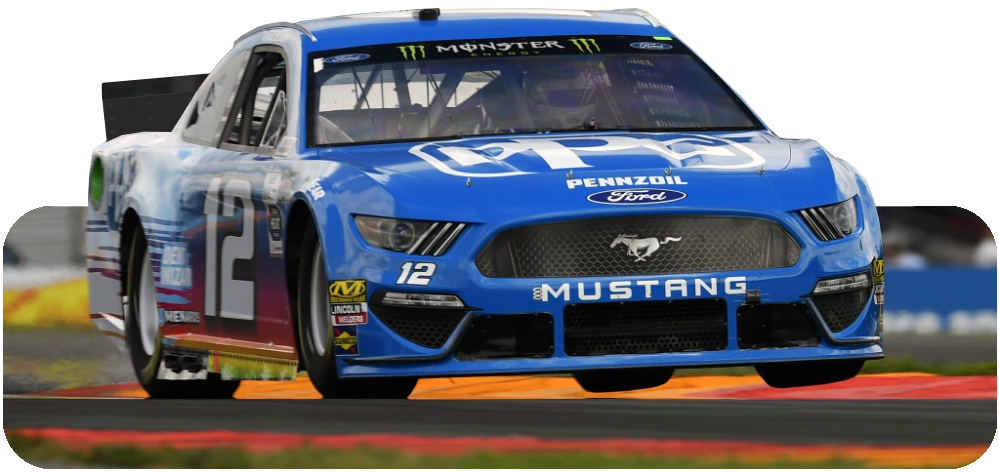
Ryan Blaney at Watkins Glen. Photo courtesy of Gavin Baker/LAT Images.
Introductory Thoughts #
As a device for augmenting the aerodynamic performance of a vehicle, the spoiler gets little recognition. It’s a design commonly seen in American stock car racing, but rarely present in other forms of motorsport. The spoiler is characterized by its extremely simple appearance, often times manifesting as a flat panel mounted to the rear of the vehicle. This simplicity can be misleading, as the addition of a spoiler has potential to markedly improve the performance of a racing vehicle.
Before Proceeding…
Readers will be best served by reviewing articles ‘Basics I - IV’.
Fundamental Effects #
Flow around all objects attempts to follow the same basic pattern. It diverges around the front, and the converges past the widest point to try to close up behind the body. When a spoiler is attached to the trailing edge of a vehicle, it significantly alters this conventional flowfield. The presence of the spoiler forces the flow to violently diverge outwards once again.
For clarity of explanation, shown below is the altered flow field after adding a gurney to a simple, streamlined body.
- An image of the streamlined and streamlined+gurney body with just streamlines
The inflection in the streamlines and the concave flow curvature increases static pressure increases ahead of and on the spoiler.
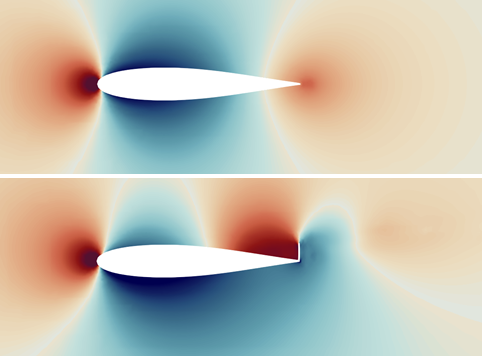
The spoiler intensifies the degree to which the object behaves as a bluff body, by not only increasing trailing edge thickness, but by also separating the flow at an acute angle. This leads to a large wake formation behind the vehicle, a wake much larger than would otherwise exist if not for the spoiler. The mechanism by which the spoiler separates flow results in the wake not only having low total energy, but also low(er) static pressure.
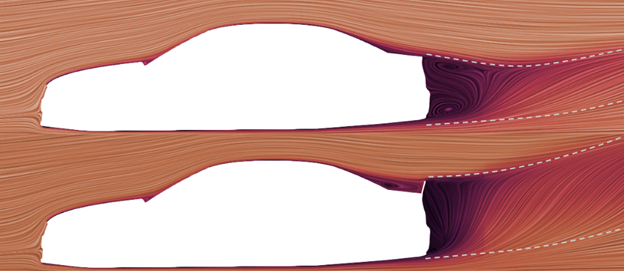
Shown below is the centerline ‘Delta’ static pressure field. This image demonstrates how the pressure field changes with the addition of the rear spoiler. There is a large increase in pressure on the trunk and rear glass and a significant decrease in base pressure. More importantly, this decrease in base pressure interacts upstream throughout the underbody.
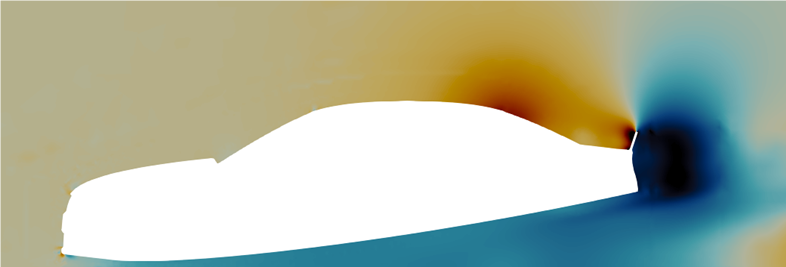
From the delta image the aerodynamic benefit for a race car can be decomposed into three effects:
Downforce production from the body - Downforce is obviously produced immediately ahead of the spoiler surface. But less intuitive is the reduction in roof lift. The roof of a car is typically of convex curvature, so in a similar vein to how an aircraft wing produces lift, the curvature of the roofline coincides with low static pressure on its surface, resulting in the roof acting as a large lifting surface. There’s already an adverse pressure gradient working to separate the roof flow without a spoiler, but the addition of the spoiler markedly increases the separation off of the roof. As less flow is following the roof surface, the static pressure on the roof is higher, and lift is decreased.
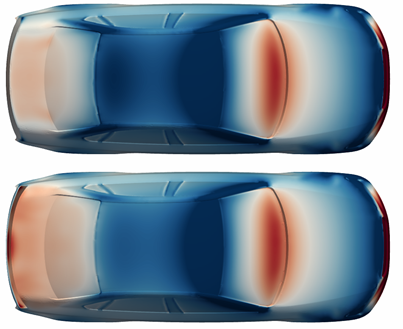
Downforce production from the underbody - To extract the maximum total performance out of a spoiler, it should interact synergistically with the underbody. As seen in figure 13, the decrease in base pressure propagates forward throughout the underbody. A small decrease in static pressure over such a large underbody area will manifest in a large force. An expanded discussion on the underbody downforce effect can be found here.
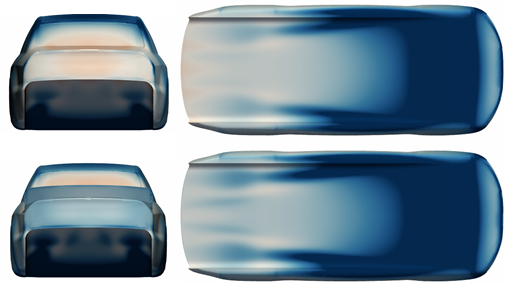
Higher Stability - Forces are only one aspect of how aerodynamics can influence vehicle performance. The spoiler, with the force acting on its front face and it’s large distance from the center of gravity of the car, will generate a torque causing the car to ‘squat’ on its rear tires. While details of stability theory are beyond the scope of the article, a more rearward biased vehicle will send to stabilize itself from disturbances, rather than let the disturbances compound and get the vehicle out of control.
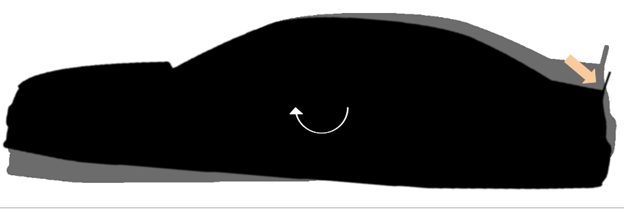
Drawbacks #
While there are many benefits, there are certainly drawbacks. The spoiler is not a very efficient method for making downforce, as it relies on intensifying the degree to which the car behaves as a bluff body. Significantly larger base pressure reductions can be achieved with a properly design multi element wing. Therefore the performance ceiling of a spoiler is much lower than that of a wing.
Therefore, when seeking the maximum in aerodynamic performance and unrestricted by regulation or cost, one should likely explore more complex options for adding aerodynamic performance.
Real World Applications #
The implementation of spoilers is visibly obvious in stock car racing, but recently they have seen usage on high end road cars. The Ferrari LaFerrari deploys a rear spoiler when cornering and braking, and melds back into the bodywork by folding down on the straights. With an active rear spoiler, Ferrari is able to avoid the unsightly nature of a rear mounted wing and maintain the classic shape of the vehicle while reaping the aerodynamics benefits.
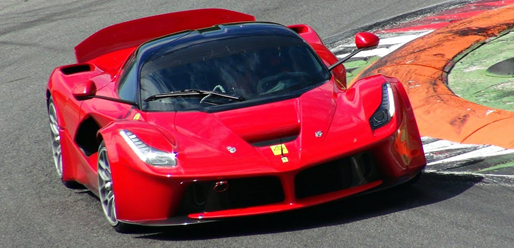
Concluding Thoughts #
There is genuine aerodynamic merit in using a spoiler. The simplicity & cost effectiveness are two superlatives often not used in the field of aerodynamics, so it should absolutely be a tool in the tool belt of designers.